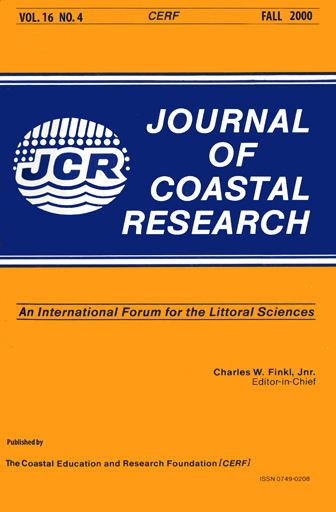Physical Oceanographic Processes Affecting Inflow/ Outflow Through Beaufort Inlet, North Carolina
Keywords:
Estuaries, tidal currents, wind-driven flowAbstract
In this study, the relationships between Eulerian measurements of inlet and estuary currents, water level, salinity, temperature and atmospheric winds are analyzed using time series and frequency domain analysis techniques to determine the physical oceanographic conditions which result in the entrainment of shelf waters into and fresh water flow out of the Beaufort Inlet (NC) Estuary System. Analyses were done on both tidal and subtidal frequency motions.
Examination of the hydrological data showed that the transport is driven not only by astronomical tides, but also via non-tidal motions that are directly and/or indirectly forced by atmospheric winds and river discharge. In summary, the retention of shelf water in the Beaufort Inlet Estuary is dependent not only on coastal Ekman dynamics but also on northward blowing winds. Southeastward blowing winds induce outflow from Bogue Sound, Newport River, and Back Sound. Southward, southeastward and westward directed winds induce Core Creek/Neuse River southward pressure gradients and outflow as well as Back Sound out flow toward the inlet. Northeastward-directed winds favor transport into Back Sound while northwestward blowing winds favor transport into the lower Newport River.
This study shows that the Beaufort Inlet Estuary System can be classified dynamically as two different estuary types. It consists of the partially mixed estuary of the Newport River coupled to Bogue and Back Sounds that behave as lagoonal type estuaries. There is a two-way transport regime at the inlet mouth where the flood tides are strongest on the eastern side and ebbs are strongest on the western side. The primary cause is asymmetrical bathymetry coupled with separate hydraulic functions of the opposite sides of the inlet; flooding on the east and ebbing on the west side. Finally, once Core Creek Canal was opened in December of 1964, allowing free communication between Beaufort Inlet and the Neuse River these areas became subjected to wind induced salinity fluctuations.


